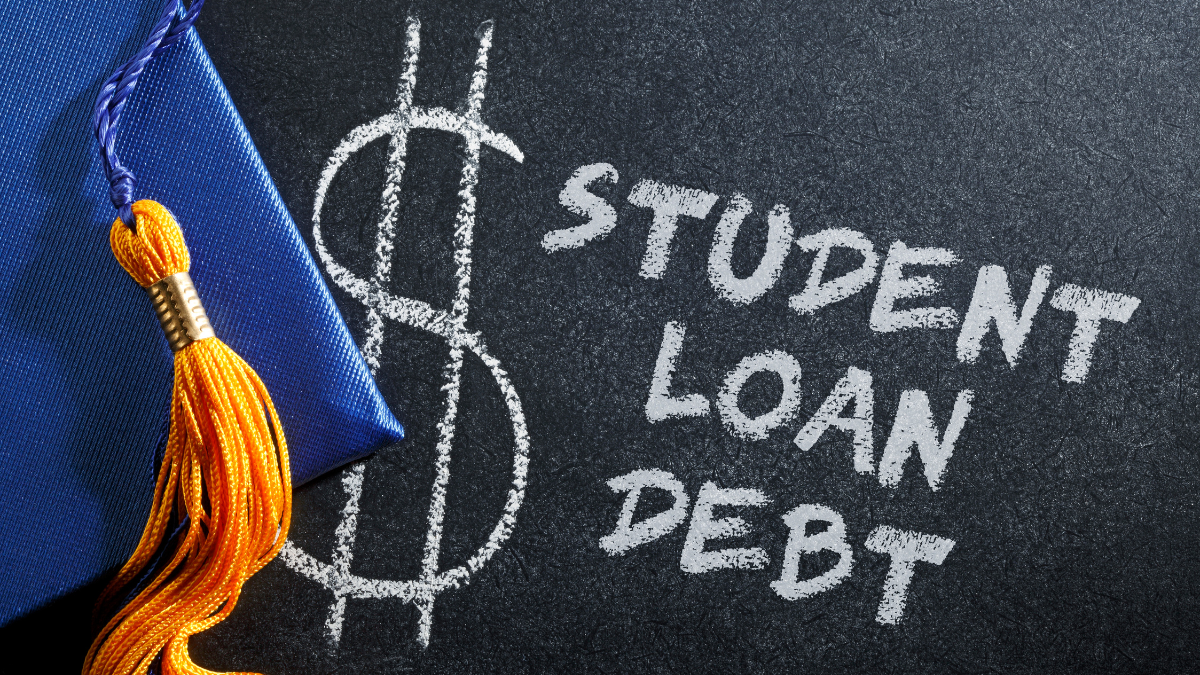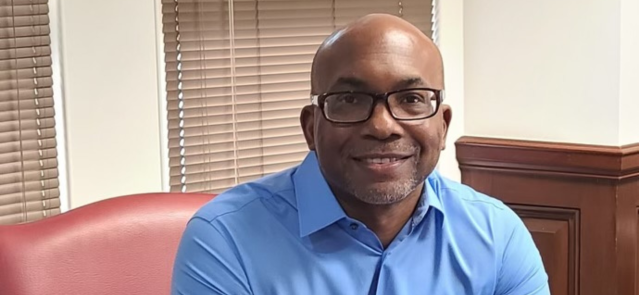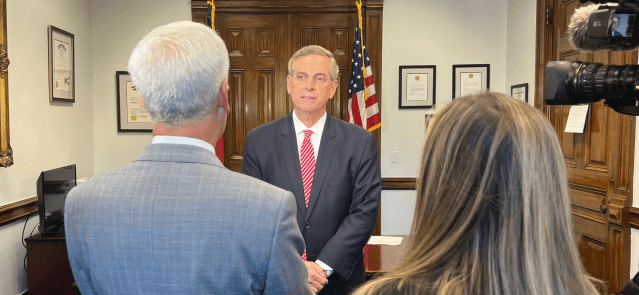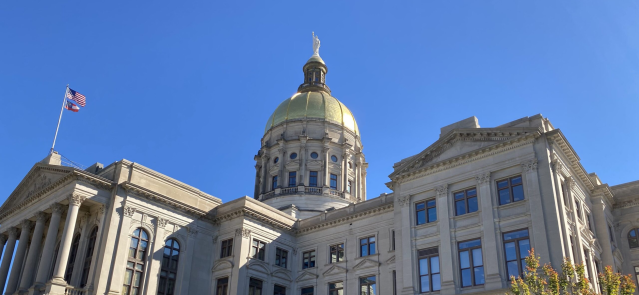Stay ahead of the curve as a political insider with deep policy analysis, daily briefings and policy-shaping tools.
Request a DemoThis story was first printed on August 28 in our sister publication, Howey Politics Indiana.

There is precious little to like in President Biden’s announcement of student loan forgiveness. Indeed, the most charitable thing that could be said is that it could’ve been worse. It could’ve been more inflationary, a bigger addition to our debt, more distortionary in markets and less equitable. That is about all the faint praise it deserves.
The plan forgives either $10,000 or $20,000 in student loans to workers who earn less than $125,000 per year, or $250,000 per couple. If your parents were poor and you qualified for Pell grants, you get $20,000; if they weren’t, you get $10,000. Altogether, this debt relief amounts to about $350 billion. That adds about 1.2 percent to our federal debt.
This addition to federal debt during this time risks worsening inflation. However, for it to actually add to current inflation, it would require those who received the debt relief to go out and spend extra money. Some will, but the effect of the debt forgiveness on additional consumption this year will be modest.
Still, we all have many other grounds upon which to critique this policy. Equity is the most compelling criticism, and I think it is worth spelling out just exactly what that means in America today. I start by noting that Americans are generally very sympathetic towards debt relief and educational assistance. Our nation has provided 80 years of the GI Bill. Both my father and I finished doctoral degrees through access to the GI Bill. I am deeply thankful for this opportunity, and wish it extended to others.
The federal government offers substantial student debt relief for public service. I have two cousins who discharged their student debt through military service. One saw extensive combat during her time in uniform. Such programs are common at the state level for teachers, public safety officers, social workers, librarians, and the like. These are generous programs that offer huge loan forgiveness options.
The U.S. has myriad needs based loan programs for poor families seeking an education. We have federal grants, work-study programs and, in most schools, generous scholarships for the poor. Many businesses pay tuition for employees seeking further education. My church even has a generous annual scholarship endowment.
We could do a lot better with these types of programs, particularly aiming support to the poorest of students. But, these remain generous and thoughtful efforts supported not just by many Americans, but by nearly all of us. As a nation, we are eager to help educate people so they may pull themselves up by their bootstraps and eager to reward those who serve the public. This debt relief honors none of that admirable spirit.
The greatest problem with the debt relief is that it primarily targets affluent households for what they have done, not what they are going to do. This makes the debt relief terribly inequitable, and thus more corrosive to our nation than whatever short-term benefits we receive.
Most of the student debt now accrued came as a result of graduate education, mostly in professional schools. Think pharmacists, lawyers, physicians, dentists, MBAs and the like. It should be immediately apparent that people in these professions should not be good candidates for debt relief. These are all people destined to be among the very highest income recipients.
That is obviously not true for all student loan borrowers with outstanding debt. The most common student debt value is zero debt. The average or mean is just over $26,000. The average debt for a pharmacy graduate is over $250,000. There are reasons to be thoughtful about very low debt held by someone who is still a low income earner. This would be true of any type of debt, held by any type of institution.
In Georgia in 2019-20, some 56% of college graduates had student loan debt. The average debt load of a Georgia college graduate in 2019-20 was $27,759, according to the Institute for College Access and Success.
I am sympathetic to debt relief for victims of some scam private colleges. We’ve already absolved that debt. I would also be sympathetic to debt relief for people who are low income, and have paid for a long period. We’ve already done that as well. But, debt relief for someone who accrued a quarter-million-dollar debt so they can earn a quarter-million-dollar-per-year salary for the next 40 years, strikes me as deeply unfair. This is especially true when you consider who will ultimately pay for this debt relief.
This debt relief will be paid off through tax dollars or inflation. Either way, the people paying will be poorer on average than the ones receiving the relief. This is true even though we have a very progressive income tax system, and many of the beneficiaries of this relief did not graduate from college.
Viewed through a prism of equity, this is a very poor public policy. Many supporters of the relief have argued that other policies are likewise simply transfers from the poor to the wealthy. They are right, but the moral weakness of that argument reflects just how bad this debt relief is. The only benefit of this argument is to highlight the hypocrisy of the many who tout tax incentives, mortgage tax credits and other transfers from the poor to the rich that color our tax systems.
Concerns for equity are not idle. Collectively, Americans are a generous people, in spirit and acts. That generosity, in both public and private support depends upon the sense of fairness. That is why almost no member of Congress opposed debt relief for those who enrolled in predatory colleges, or those who chose to serve the nation. This policy further erodes the sense that we are embarked on a long, shared experiment in democracy.
In the end, the student debt relief is just pandering to a Democratic-leaning constituency. Within the overall scope of pandering with bad economic policy, it is modest. Still, it richly deserves the criticism it receives. It is inequitable, inflationary and drives us further away from principled compromise on problems with education nationally. These are all factors to weigh next time the issue comes before voters.
Michael J. Hicks, PhD, is the director of the Center for Business and Economic Research and the George and Frances Ball distinguished professor of economics in the Miller College of Business at Ball State University in Indiana. Hicks has authored two books and more than 60 scholarly works focusing on state and local public policy, including tax and expenditure policy and the impact of Wal-Mart on local economies. You can reach him at [email protected]
For a different view on this topic, read Commentary: Despite costs, Biden’s Student Loan Relief is still a good move
Newly minted Senate Minority Leader Harold Jones II: ‘I’m not the typical back-slapping politician’
Nearly 10 years into legislative life, Sen. Harold Jones II wouldn’t change anything about the experience. “I love every minute of it. Even when I hate it, I love it,” the 55-year-old Augusta Democrat told State Affairs. Come January, Jones will add another role to his legislative duties: Senate minority leader, a job held for …
Gov. Kemp calls on state agencies to be fiscally restrained amid record $16.5B surplus
The Gist Gov. Brian Kemp asked the state’s 51 government agencies for continued fiscal restraint when drafting their amended fiscal year 2025 and 2026 budgets. Most agencies adhered to his request even as the state’s general fund surplus hit a record $16.5 billion last month. Forty-five agencies, excluding state courts, followed the governor’s instructions to …
Georgia defies bomb threats as election chief declares a “free, fair and fast” vote amid record turnout
ATLANTA – Despite dealing with over 60 bomb threats, Georgia’s election chief said Tuesday the state’s general election went smoothly. Georgia had a record turnout with nearly 5.3 million people voting, Secretary of State Brad Raffensperger told reporters. Election officials in the state’s 159 counties have until 5 p.m. to certify votes. “We had a …
In the (state)house: Meet the newest members of the Georgia legislature
When lawmakers reconvene at the state Capitol on Jan. 13, there’ll be a cadre of new faces in the 236-member Georgia General Assembly, one of the nation’s largest state legislatures. All 236 statehouse seats were up for election this year. Most candidates ran unopposed. Incumbents in contested races easily kept their seats, with the exception …





